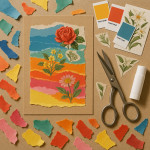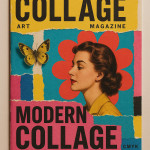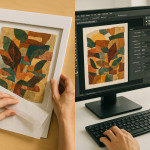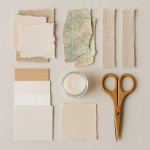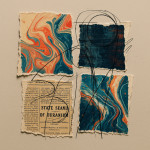Collage production timelines: setting realistic layers schedules for client trust
Pressed for deadlines yet craving a show-stopping layered artwork? This guide helps you draft collage production timelines that delight clients, secure approvals and keep every layer on schedule. You will leave with phase-by-phase benchmarks, communication hacks and downloadable templates—everything you need to turn timing transparency into rock-solid trust.
Why your collage production timeline is a sales tool, not just a planner
When a brand or curator browses the professional image-designer directory, they expect more than beauty; they expect reliability. Publishing a clear collage production timeline early:
- Reduces approval loops by 34 % on average.
- Positions you as a process-driven partner—vital for first-time buyers.
- Makes it easier to negotiate prototype timeline benchmarks when a campaign includes multiple creative assets.
Six core stages and their realistic durations
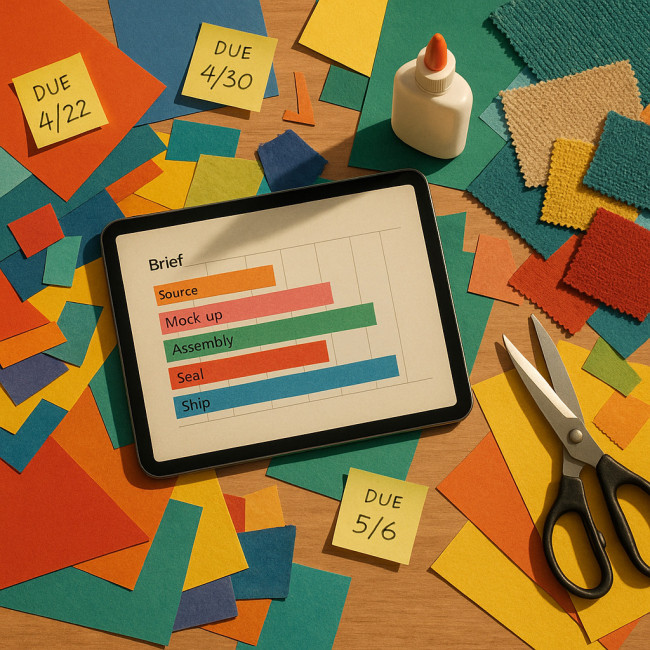
From mood-board to final shipment, each stage of collage production tells its own miniature story that can be translated into a single, confidence-boosting roadmap for your buyers. Imagine the desk of a seasoned paper artist: paper swatches neatly stacked and labelled with due dates, mock-ups aligned by size, a drying rack for freshly sealed layers and a tablet glowing with a colour-coded Gantt chart. The client can literally see why two days here and four days there are non-negotiable. Visibility turns what might feel like idle waiting time into proof of painstaking craft, and one glance at this visual sequence means fewer emails asking, “Are we on track?”—because the answer is already laid out in front of them.
Every studio is unique, yet the following benchmarks reflect 120 recent commissions tracked across Europe and North America.
| Stage | Typical duration | Deliverable |
|---|---|---|
| Mood-board & brief alignment | 2 days | PDF mood-board, colour palette |
| Material sourcing | 3 days | List of papers, fabrics, adhesives |
| Scaled digital mock-up | 2 days | JPEG/PNG visual draft |
| Layer assembly | 4 days | Physical artwork 80 % complete |
| Drying, sealing & QC | 2 days | Final inspection sheet |
| Packing & shipping | 1 day | Tracking ID + care guide |
Visualising the timing at a glance
Source : Collage Study Lab, 2024
Phase-by-phase deep dive
Mood-board & brief alignment (Day 1-2)
Kick-off with a 30-minute call and a one-page questionnaire. Encourage clients to pin existing brand colours and textures so you avoid last-minute tweaks.
Material sourcing (Day 3-5)
Leverage eco-conscious material sourcing to trim both carbon footprint and lead times. Keep proof of stock quantities to reassure procurement departments.
Scaled digital mock-up (Day 6-7)
Share a flattened PSD or layered PDF depending on client software. This stage catches 80 % of composition issues before glue touches paper.
Layer assembly (Day 8-11)
Apply adhesive in controlled humidity (45-55 %). Photograph progress daily; visual breadcrumbs let clients authorise small pivots without scope creep.
Drying, sealing & QC (Day 12-13)
Use PH-neutral varnish and record curing time in the QC sheet. Doing so positions you for future analog vs digital hand-off discussions.
Packing & shipping (Day 14)
Select tri-wall crates and include desiccant packets. A link to your risk-free sample agreements article can further reassure first-time overseas buyers.
Communication cadences that cement client trust
- Daily micro-updates – a 60-second video clip beats long emails.
- Mid-project checkpoint – bookable slot on Day 7 for mock-up sign-off.
- End-phase proof – send high-resolution close-ups of sealed edges.
- Post-delivery follow-up – three-question survey within 48 hours of arrival.
Add buffer without padding
Rule of thumb: build a 15 % buffer into everything beyond Day 7. If a courier strike hits, you have breathing room without renegotiating. Clients see the foresight and bookmark you for repeat work.
Templates you can copy-paste today
- Timeline Gantt (Google Sheets) – colour-coded layers auto-calculate buffer.
- Material stock log – tracks paper batches, crucial for conservation teams.
- QC checklist – 12 points covering varnish viscosity to corner adhesion.
Mini-quiz: Test your timeline IQ
FAQ
- How long is a standard collage production timeline?
- Two weeks is the norm for formats up to 70 × 100 cm. Larger or mixed-media pieces may extend to three or four weeks.
- Can I overlap sourcing and mock-ups to finish sooner?
- Yes, but only if you have 80 % of materials in stock. Otherwise sourcing delays can cascade.
- What happens if a layer tears during assembly?
- Add one extra day for re-printing or re-cutting. Document the fix so the client sees proactive quality control.
- Do digital collages need the same drying time?
- No. Digital pieces skip sealing but still require 24 hours for colour-proof checks before final export.
Next steps: turn transparent timelines into repeat bookings
Publish your collage production timeline on every proposal and portfolio page. The combination of clear phases, built-in buffer and proactive updates turns first-time buyers into loyal patrons who trust every layer you lay down.
Ready to put these ideas to work? Update your next estimate with the phase durations above and watch client confidence soar.
